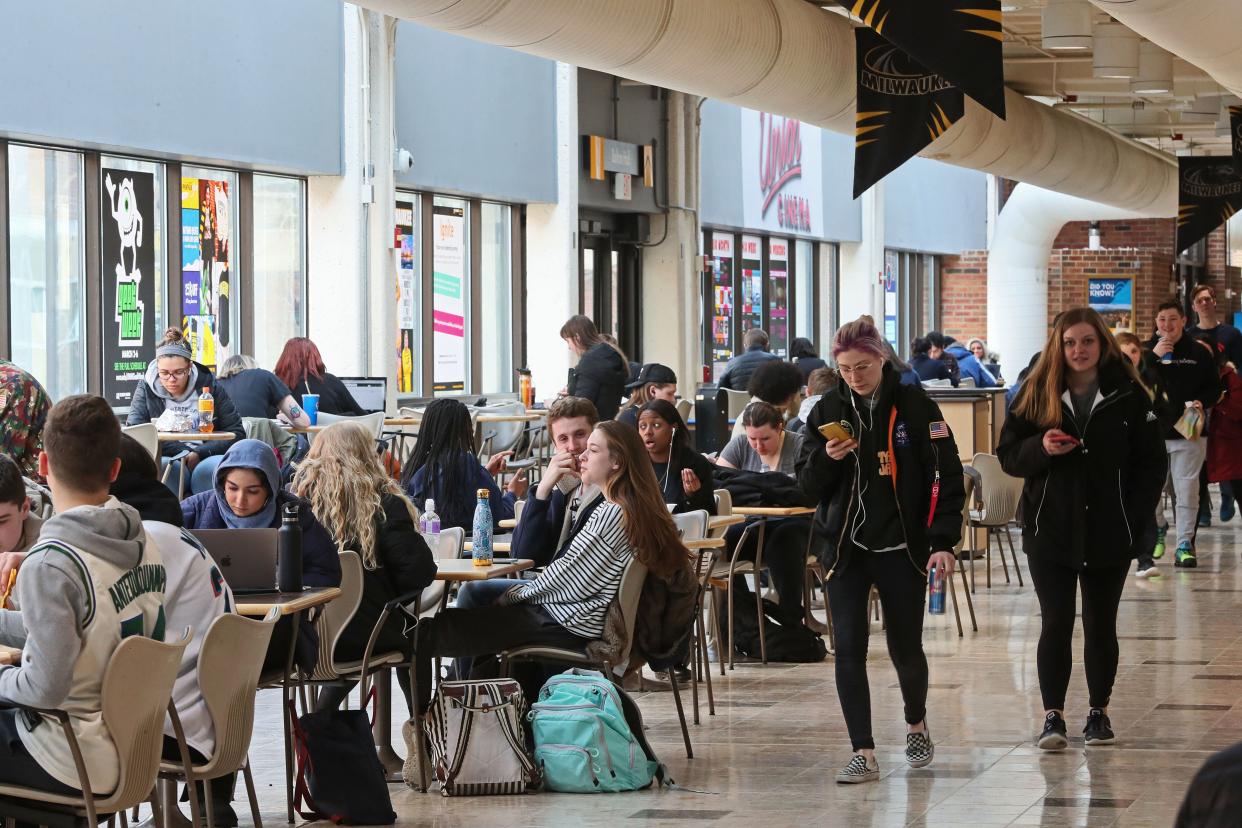Wisconsin lags the country in terms of investing in college financial aid, report finds

Wisconsin's stagnant — and in some cases declining — investment in state financial aid has led to college students and their families having to pay for a larger portion of the cost of a degree, according to a new report by the Wisconsin Policy Forum.
The policy forum's report, issued Tuesday, is the latest in a series of analyses by the forum that have sought to dive into the challenges the state's colleges and universities face in preparing the workforce of tomorrow amid declining taxpayer support and, in many cases, declining enrollment trends.
The nonpartisan research center found that state lawmakers have not prioritized financial aid in recent state budgets. Instead — in the University of Wisconsin System's case — they took the approach of freezing tuition for in-state undergraduates for nearly a decade.
But freezing tuition does little to specifically target those students who are most in need, the forum's report concludes. The approach also doesn't help students who attend private colleges or the state's technical and tribal colleges.
More: Declining enrollment, weak legislative support, pandemic fallout all cloud UWM's future
More: Report: Wisconsin's public colleges are falling behind as state funds lag and enrollment drops
Wisconsin saw rapid growth in state spending on grants, loans and scholarships to undergraduate students between 2000 and 2011, but that has since come to a grinding halt and ultimately declined by half a percentage point in the decade since.
From 2000 to 2021, the average unmet need for students at all Wisconsin colleges grew 135.6% when adjusted for inflation, to $8,845 in 2021. The average award for the federal Pell Grant and the state's Wisconsin Grant combined covers 69% of the in-state tuition at UW-Madison. In 2002, the grants used to cover just over 90%.
The report also found Wisconsin was trailing other states in terms of how much it spends on financial aid grants per student. In 2020, the state spent $541 per undergraduate student, almost half the national average of $980.
That's even though the total spending on grant aid for undergraduates increased by $13.7 million from 2010 to 2020, a growth rate that ranked the state 36th out of 50 states and was three-and-a-half times less than the growth rate nationally.
Recommended solutions already rejected by state lawmakers
The report suggested several possible options to address the declines in state financial aid, some of which have been proposed in the past but lacked support from state lawmakers.
The first is to potentially consolidate small financial aid programs that are run by various state agencies so that Wisconsin students and families can access information in a one-stop state website.
The authors also suggested financial aid funding levels should be determined based on the end cost to the students, and that the state should consider expanding or duplicating a UW-Madison full scholarship program for all public and tribal colleges.
The idea of expanding Bucky's Tuition Promise — which provides full-tuition scholarships to Wisconsin residents whose annual household income is less than $60,000 — is not new.
Former UW System President Tommy Thompson pitched the idea to state lawmakers in 2020, with no luck. The program was part of a $95.7 million budget increase request for the UW System, of which the colleges ultimately got only $8.25 million.
Finally, the report said, the state could increase the overall funding for the Wisconsin Grant program, which is administered by the state's Higher Education Aids Board and provides scholarships to Wisconsin students at UW, technical, tribal and private colleges.
A $6.1 million increase in funding would provide $204, or 10% more, to each of the nearly 30,000 UW System students who received grants averaging $2,037 in 2021. Proportional increases for students at technical, tribal and private colleges would cost the state even less, the report's authors wrote.
Sherrie Nelson, the Higher Education Aids Board's administrative policy advisor, said the agency did seek more funding for Wisconsin Grants at all types of colleges in its 2020-2023 budget request. The UW System alone requested the state put $4.5 million more toward the Wisconsin Grant program in the 2021-23 biennium.
"None of the Wisconsin Grants got any increases at all," Nelson said.
The program operates on a first-come, first-serve basis, and has had a long waitlist. In the 2019-20 school year, the UW System fell about $2.3 million short of funding all the eligible applicants.
Michael Falbo, interim president of the UW System, responded to the report's findings, saying more targeted aid would not just help students and families, but all of Wisconsin.
"Declining student aid increases student debt, depresses enrollment, and exacerbates Wisconsin’s workforce challenges," he said.
The report was partially funded by the Herzfeld Foundation, the Higher Education Regional Alliance, the ADAMM Foundation and the Milwaukee Regional Research Forum.
Contact Devi Shastri at 414-224-2193 or DAShastri@jrn.com. Follow her on Twitter at @DeviShastri.
Our subscribers make this reporting possible. Please consider supporting local journalism by subscribing to the Journal Sentinel at jsonline.com/deal.
DOWNLOAD THE APP: Get the latest news, sports and more
This article originally appeared on Milwaukee Journal Sentinel: Wisconsin lags the country when investing in college financial aid

